Common Cattle Diseases and Their Prevention Strategies
Cattle health is paramount to running a successful and profitable cattle farm. Unhealthy cattle mean losses in milk and meat production, reproduction efficiency, increased vet bills, and ultimately lower profits.
As a cattle farmer, it is critical to understand common cattle diseases, their causes, symptoms, modes of transmission, and most importantly, prevention strategies to safeguard your herd.
In this blog article, we will cover all aspects of cattle health management, from disease basics to tailored prevention plans. Read on to learn how to create the optimal environment for your cattle to thrive in.
The Importance of Cattle Health in a Thriving Farm
Keeping cattle healthy is no easy feat, but it remains the foundation of every high-performing cattle operation. Unhealthy animals lead to milk yield loss, weight gain, fertility, and calf survival. Disease outbreaks diminish profits through increased vet bills, mortalities, and extra labor costs.
They disrupt breeding and production cycles on your farm. Most importantly, widespread illness causes immeasurable distress and suffering to your animals.
As a diligent cattle farmer, staying abreast of disease prevention strategies will benefit you tremendously. Understanding disease transmission patterns, common clinical signs, and predisposing factors, and instituting smart management practices will safeguard your farm.
Think proactively when it comes to cattle health – maintain clean, stress-free living conditions, supply optimal nutrition, implement biosecurity measures, control parasites strategically, and vaccinate appropriately. Keep a close eye on your herd’s appearance and behavior daily.
At the first signs of trouble, act decisively. Intervening early minimizes losses and animal misery. Work closely with your local veterinarian to tailor a health plan for your farm.
Healthy animals are the centerpiece of a productive farm. By making cattle health a top priority, you set yourself on a path to success. Use this guide as your handbook on cattle ailments and preserving your herd’s well-being through intelligent disease prevention regimes.
1: Understanding Common Cattle Diseases
Cattle, like all living creatures, are afflicted by various illnesses during their lifespan on your farm. Bacterial, viral, parasitic and management-related diseases prevail in cattle worldwide.
The clinical manifestations vary widely – respiratory distress, diarrhea, debility, skin lesions, neurological signs, mastitis, abortion, and more. Often these diseases develop from complex interactions between infectious agents and environmental stressors.
Familiarizing yourself with common cattle maladies will position you to act decisively in safeguarding your herd’s health.
This section covers the major cattle disease categories – respiratory, enteric, skin, hoof issues, neurological, reproductive, and udder health problems. Understand the causal factors, modes of transmission, characteristic symptoms, and proven prevention strategies for each ailment outlined below.
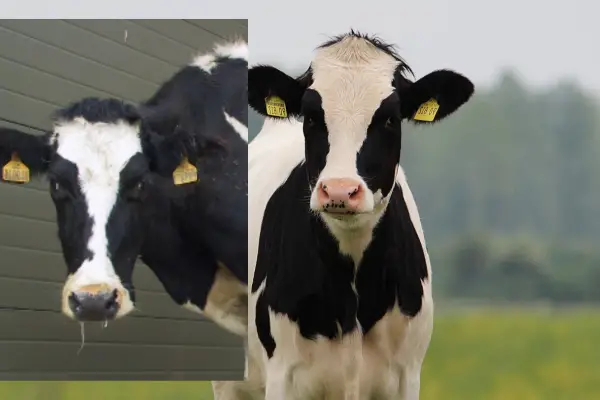
Respiratory conditions are arguably the most widespread and devastating cattle illnesses worldwide. Three multifactorial respiratory diseases namely Infectious Bovine Rhinotracheitis (IBR), Bovine Respiratory Disease Complex (BRDC) and pneumonia collectively generate the greatest economic losses on cattle farms annually.
Causes: IBR is attributable to Bovine Herpes Virus-1 that tends to flare up during periods of stress. BRDC arises from complex interactions between stress, viruses like BVDV, bacteria and unfavorable environmental conditions. Bacteria like Mannheimia haemolytica, Pasteurella multocida, Histophilus somni and Mycoplasma bovis drive pneumonic cases.
Symptoms: Typical manifestations are fever, nasal discharge, coughing, labored breathing, loss of appetite, lethargy, decreased production and mortality in calves.
Prevention: Strict biosecurity, appropriate vaccination, prompt treatment, reduced crowding, ventilation and stress modulation help curb respiratory disease spread.
Enteric Diseases:
Enteritis and scours in calves along with coccidiosis and parasitism are important enteric issues decreasing productivity on cattle farms.
Causes: Diarrheal disease in cattle frequently stem from infectious agents like Rotavirus, Coronavirus, Salmonella, E.Coli and parasites alongside dietary mismanagement. Coccidiosis is instigated by the protozoan parasite Eimeria discharged in feces.
Symptoms: Profuse, watery diarrhea, dehydration, abdominal discomfort, weakness and death are seen, predominantly in calves under six months old.
Prevention: Maintaining colostrum intake, dry bedding, sanitation and proper nutrition coupled with strategic deworming and vaccination prevents enteric illness.
Skin and Hoof Diseases:
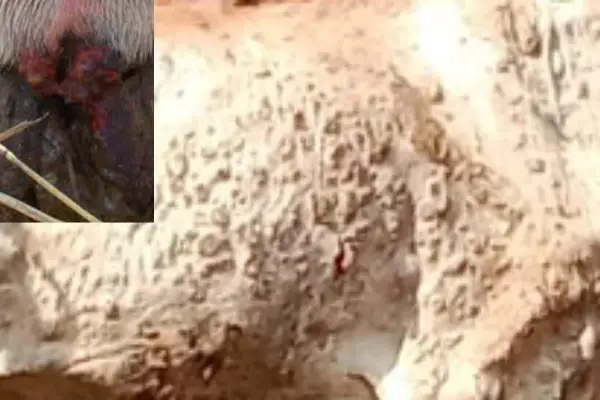
Integumentary diseases like ringworm, warts, pinkeye, dermatophilosis and foot rot plague cattle herds worldwide. These conditions peak during warm, humid weather.
Causes: Fungal (Trichophyton verrucosum), viral (BPV) and bacterial (Moraxella bovis) infections drive these skin conditions while foot rot stems from Dichelobacter nodosus and Fusobacterium necrophorum colonization of hooves.
Symptoms: Classic manifestations are skin lesions, wart formation, ocular discharge, limping and hoof deformation.
Prevention: Avoiding trauma to skin and hooves while providing shade minimizes disease risk significantly. A proper foot bathing regime for infected animals also curtails transmission.
Neurological Diseases:
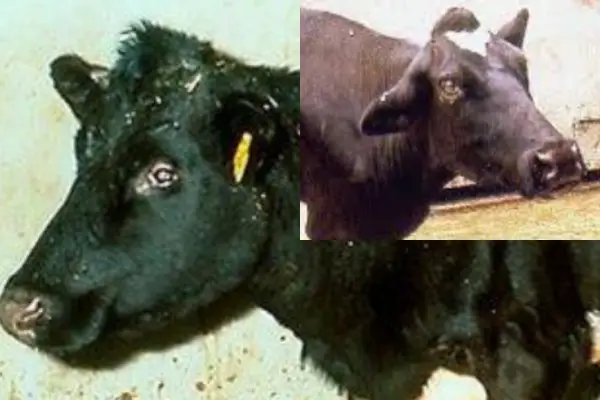
While sporadic in cattle, rabies, polioencephalomalacia, tetanus and botulism outbreaks induce substantial losses to farmers.
Causes: Rabies and tetanus arise from Clostridium tetani wounds while thiamine deficiencies precipitate polio. Botulism follows ingestions of preformed C.botulinum neurotoxins in spoiled feed.
Symptoms: Affected cattle display dramatically altered behavior – excitation, paralysis, convulsions, salivation, vision difficulties and sudden death.
Prevention: Annual vaccination for rabies and tetanus alongside meticulous feed monitoring to avoid neurotoxic substances keeps neurological issues at bay.
Reproductive and Udder Diseases:
Brucella abortus-induced abortions, metritis, infertility and mastitis constitute grave threats to herd reproductive and lactation capabilities.
Causes: Bacteria like Brucella, Streptococcus uberis, Staph aureus and Mycoplasma trigger metritis and mastitis while Leptospira hardjo impairs fertility.
Symptoms: Hallmark signs include aborted pregnancies, uterine/ mammary inflammation, reduced conception rates, pain, fever, lowered milk yield and quality.
Prevention: Using AI, culling infected animals, teat dipping, dry cow therapy together with Leptospira vaccination increase herd reproductive success and milk output.
2: Essential Prevention Strategies for Healthy Cattle
While understanding cattle diseases is invaluable, actively devising tailored prevention strategies that interrupt transmission pathways is the game-changer in safeguarding your herd’s wellbeing. Head off trouble through smart biosecurity, nutrition, pasture management, vaccination, deworming protocols and stress moderation for optimal cattle health.
Biosecurity:
As the adage goes, “Prevention is better than cure” – this rings especially true for cattle farms. Blocking infectious agents entry into your farm through strict biosecurity protocols is the cornerstone of successful disease prevention. Core aspects of on-farm biosecurity encompass:
Quarantine: Isolate incoming/returning animals for 21-30 days before introduction to check for latent infections. Examine them thoroughly and test/treat them accordingly. Limit contact between the quarantined and general population. Have dedicated staff, equipment, protective clothing and foot dips for quarantined cattle.
Hygiene: Insist personnel and visitors sanitize footwear/clothing and wash hands before entering calf-rearing areas or maternity pens. Cleaning high-traffic zones, calving pens, feed troughs and water points prevent pathogen build-up. Pick up leftover feed promptly to deter pests. Proper manure disposal and composting kill parasites and pathogens over time.
Pest Control: Discourage flies, rats and other vermin from inhabiting cattle sheds through screening and pest management routines. Their control checks disease spread significantly.
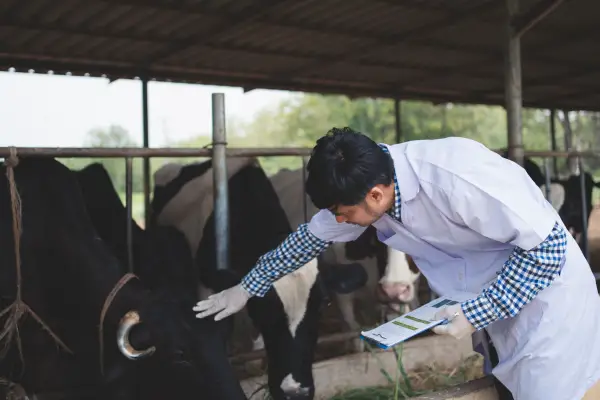
Nutrition and Supplementation:
Supplementing balanced nutrition bolsters disease resistance in cattle across all ages. Key aspects entail:
Balanced Diet: Supply age and production-stage-appropriate rations to fulfill protein, mineral, vitamin, energy and fiber needs for optimized immune function.
Mineral blocks: Provide cattle free-choice access to specifically formulated mineral blocks. Certain trace minerals and vitamins heighten resilience against infections.
Winter-feeding: Increased calorie and protein-rich rations during colder months conserve body reserves critical for immune responses and gestation.
Pasture Management:
Well-managed pastures furnish nutritive grazing material for cattle health year-round. Essentials include:
Grass Selection: Sow productive, deep-rooted, pest-resistant grass species best suited to your climate, growing seasons and soil conditions.
Weed Control: Routinely harrow, spray or manually uproot noxious weeds that displace desirable grass species. Certain weeds also harbor parasite larvae infective to cattle.
Water Availability: Supply clean fresh water ad-libitum through streams, natural water bodies or strategically placed water troughs across pastures. Avoid stagnant collections that encourage parasites. Move troughs periodically to avoid excessive mud and manure accumulation at any one site.
Rotation: Rotate cattle across multiple enclosed pastures and avoid overgrazing through controlled, high-density mob grazing. This preserves grass quality and curbs parasite transmission.
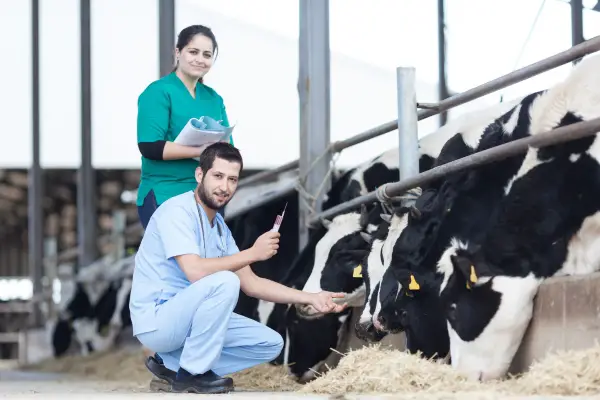
Vaccination and Deworming:
Tailored vaccination and strategic deworming safeguard cattle health against specific infectious threats. Recommendations include:
Essential Vaccines: Administer 7-way clostridial vaccines annually alongsideVision-7 or Triangle-9 combinations against IBR,PI3, BRDC or pinkeye etc. Vaccinate breeding heifers against BVDV, Leptospira and vibriosis for reproductive protection.
Deworming Schedule: Deworm calves at 2-3 months old followed by annual booster doses coordinated with seasonal weather patterns. Also deworm cattle post-parturition or before introduction to clean pastures. Utilize fecal sampling to detect subclinical burdens warranting intervention.
Herd Management Practices:
Certain daily cattle handling techniques profoundly influence wellbeing on your farm. Useful practices entail:
History: Buy cattle with detailed health history from trusted sources. Place high value on health status over minor savings per animal cost. Seek veterinary counsel before introductions.
Receiving: Provide segregated, low-stress receiving pens for new animals with easy access to feed, mineral supplements and water. Check for symptoms and treat accordingly before mixing with general herd.
Sick Handling: Isolate ailing cows, especially calves in dedicated pens during therapy. Feed separately to avoid competition with healthier animals. Handle these cattle last each day.
Breeding: Opt for artificial insemination using semen from veterinary-approved stud sources over natural service. This avoids introducing unfamiliar animals with uncertain health status onto your farm.
Regular Health Checks:
No prevention plan succeeds without diligently monitoring your cattle’s health daily. Keen observation coupled with seeking expert veterinary advice at the earliest signs of trouble makes all the difference.
Behavior: Any deviation from normal feeding patterns, rumination, activity, gait or disposition must trigger closer inspection. Know what is abnormal for your herd.
Appearance: Routinely check cattle coats, eyes, nostrils and tails for abnormal discharge indicative of sickness. Examine hooves, mammary glands and genitals too.
Don’t delay once symptoms manifest – seek veterinary aid promptly to diagnose issues accurately and intervene effectively. Value their expertise in submitting samples and conducting diagnoses for optimal treatment outcomes. Prevention may be better than cure, but timely cure once disease strikes stops losses in their tracks.
3: Additional Resources and Considerations
While this guide covers cattle health extensively, farmers must seek reputable sources for the latest research insights and recommendations suited to their farming context. Regional specifics including climate patterns, endemic diseases, feed/drug availability and prices determine what works best on your farm. Stay engaged with cattle health research and tailor your plans accordingly.
Finding a Qualified Veterinarian:
Local veterinary expertise offers invaluable, timely and nuanced advice for your farm’s needs as issues emerge. Run prospective hires through your regional Cattle Association to ascertain credentials and experience.
Also network with farming neighbors benefiting from a particular vet’s services. Visit their clinic – observe the infrastructure, cattle-handling facilities and protocols before partnering for your farm. Vet competency makes all the difference during health crises.

Biosecurity Best Practices:
General biosecurity principles covered earlier provide the blueprint for disease prevention on cattle farms. Adapt specifics to your scales of operation and resources judiciously.
Large dairy units will institute more exhaustive protocols including changing attire and showering-in compared to smaller beef cattle farms. Develop standard operating procedures and ensure proper training at all levels to comply. Post reminders, circulate regular memos and lead by example to drive biosecure behavior home.
Your farm layout either enables or hinders biosecurity aims. Seek qualified advice on structuring cattle zones, people traffic patterns and resource placement optimally. Invest in durable, biosecure equipment and institute disciplined maintenance routines for maximum payoff.
Focus efforts on vulnerable areas like calving pens and hospital zones. Remain vigilant and plug any overlooked gaps that infectious agents exploit.
Nutritional Deficiencies and Disease:
Balanced cattle nutrition confers resilience against diseases by supporting optimal immune responses to infections. Deficiency in key minerals like selenium, copper, zinc and vitamins A, D3, E cripple disease-fighting capabilities making cattle overly vulnerable when exposed to viruses, bacteria and parasites.
Supply mineral mixes, feed additives or boluses to address common deficiencies in your locale and production cycles.
Nutritional stress during critical periods like late gestation and early lactation exacerbates postpartum risks like mastitis, metritis, ketosis etc. Offer strategically formulated rations and high-quality forage before calving and into early lactation.
Work with your nutritionist to maximize feed quality and mineral bioavailability within seasonal constraints. Monitor cattle closely through dietary transitions and breedings to minimize nutrition-related afflictions.
The Role of Stress in Cattle Health:
Stress is the sworn enemy of health and directly suppresses cattle immunity. Poorly ventilated, overcrowded housing generates physiological stress alongside heat, humidity extremes and inclement weather. Restrict cattle movements, avoid loud noises and idle presence of dogs around cattle zones.
Transport or weaning stress calves judiciously. Adhere to low-stress handling principles using flight zones and Bud Box setups. Ensure shelter and easily accessible food/water post-handling to aid recovery.
Address social stressors like aggressive penmates promptly through reorganization. Familiarize animals to any diet transitions gradually. Sync cattle handling protocols, movements and diet changes to their natural circadian rhythms for minimal bother. Consistent, positive human interactions buffer handling stress tremendously.
Conclusion
Safeguarding your herd from disease pays guaranteed, long-term dividends for your cattle operation. Losses and distress inflicted during outbreaks outweigh any short-terms savings from skimping on disease prevention.
Invest concerted efforts into nourishing a robust innate and acquired immune capability throughout your herd. This begins with transitioning calves successfully onto feed, minimizing stress events, supporting nutrition generously and preparing cattle through booster vaccinations/deworming before any anticipated challenge.
Remain observant of subtle signs, keep detailed records and act swiftly against trouble in partnership with your local veterinarian. When a crisis strikes, have hospital pens, medical supplies and extra labor support ready to respond.
Contain affected animals promptly and avoid overcrowding healthy stock. Decontaminate all exposed areas completely once the outbreak resolves.
Reflect on predisposing factors that possibly precipitated the episode. Re-evaluate your current prevention protocols against the disease in question. Bolster biosecurity measures tailored to future-proof your farm against similar outbreak recurrences.
Ultimately, prevention-centric management creates reliably healthy, resilient cattle herds that form the backbone of thriving cattle farms worldwide. Stay vigilant, invest sensibly and reap the sizable returns from your prized cattle for years to come.


